|
|
Harp Guitar Relatives |
Move mouse cursor over images to identify which images will expand (pointer changes to a hand)
See bottom of page for image copyright information
| The following 6 images are courtesy of Erling Moldrup, from his Danish book Guitaren: Et eksotisk instrument i den danske musik. | ||
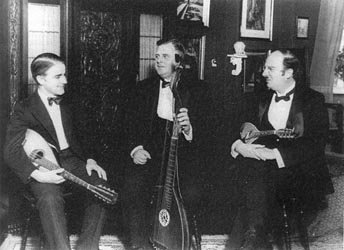 |
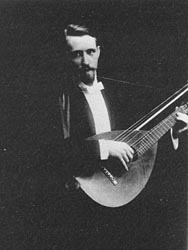 |
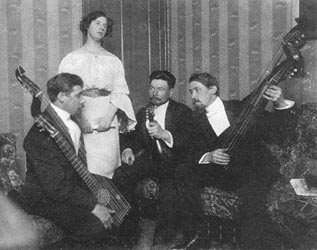 |
| Braconey Trio, with Gunnar Frederiksen on Swedish Lute | Frederik Birket-Smith | Achton Friis Trio, with Johan Tolstrup and Frederik Birket-Smith on Swedish Lutes. |
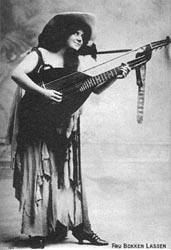 |
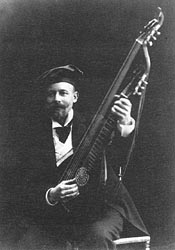 |
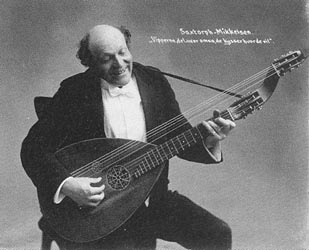 |
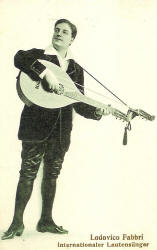 |
| Bokken Lassen | Wilhelm Matthison-Hansen | Jacob Saxtorph-Mikkelsen | Lodovico Fabbri, "International Lute-singer" |
Hollow-arm "Pseudo" Harp Guitars and Mandolins
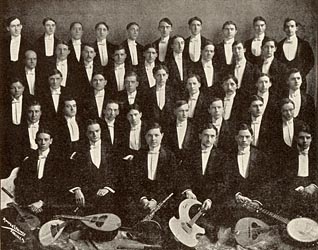 |
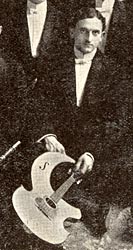 |
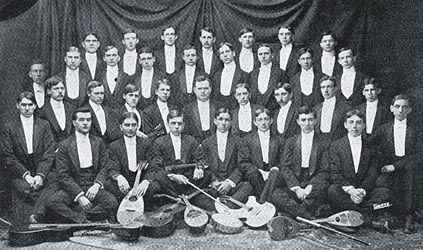 |
| Notice the
ultra-rare Martin harp-mandolin (hollow-arm "pseudo-harp"
instrument) amongst the otherwise common bowlbacks of the day. Dickinson College Glee, Mandolin and Guitar Club, 1904 |
||
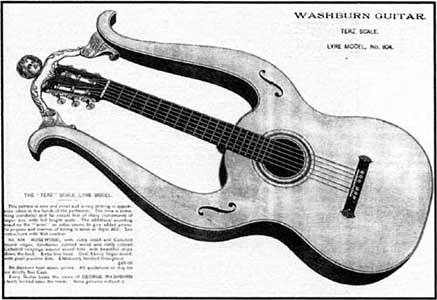 |
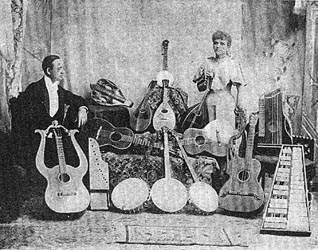 |
| Washburn's Terz scale (tuned a minor third higher) Lyre Guitar, c.1890s. | The Washburn Lyre model from an 1890s catalog. |
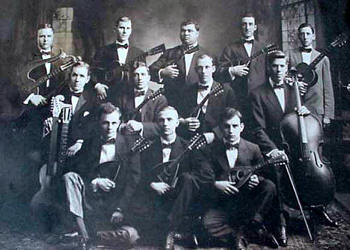 |
| Olympic Mandolin Club, with the same model. This instrument (along with the image) in the collection of Music Folk store. |
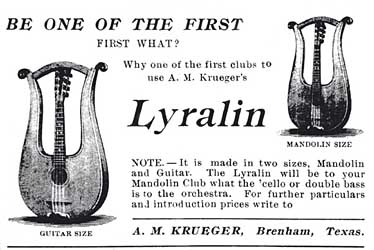 |
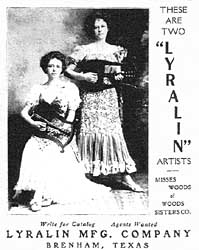 |
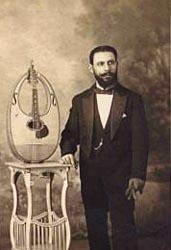 |
| Patented in 1906 by Krueger. No images exist, but there was apparently a harp guitar version. Cadenza, Aug, 1908 | Cadenza, May, 1909 | A fascinating Italian-looking instrument |
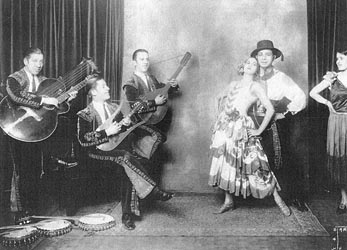 |
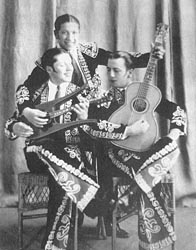 |
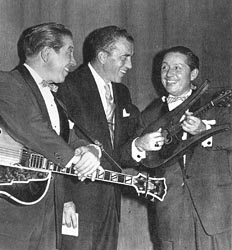 |
| The Andrini Brothers in "Spanish Fantasy" in 1926, with Lawrence on a mandolira made by Antonio Ferrucio. | The Andrinis as "The String Wizards" c.1926 | And Lawrence on Ed Sullivan in 1955. The mandolira is still playable in the possession of a nephew! |
| The images above are from "Mandolins, Like Salami" by Sheri Mignano Crawford, courtesy of the author. The 2005 book contains personal stories about Italian mandolin orchestras in San Francisco - rare glimpses into the groups and their members. Available from www.zighibaci.com | ||
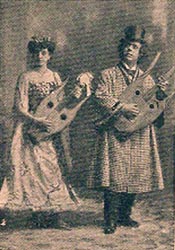 |
| An Italian postcard of two lyre guitar players. |
Multi-neck Guitars and Mandolins
|
In the March, 1906
issue of The Cadenza appeared this strange photo of "virtuoso"
DeMain Wood. The contraption he is holding is a standard Washburn guitar that
the mechanical genius Wood turned into a multi-stringed, multi-fretted,
mechanically-actuated
one-man-band. Even more astounding - the instrument survived, and sold on
eBay on June, 2004! All the various strings appear to have been mechanically
fretted - it's hard to tell from the pile of spare parts that came with it!
I think that the strings beneath that long decorative cover have
their own reverse fretboard, rather like the two previous patents - so I
believe it qualifies as a "multi-neck" rather than as a true harp guitar. |
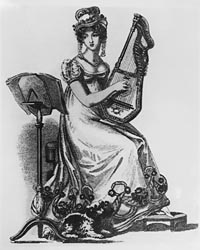 |
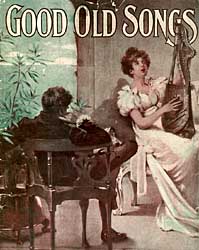 |
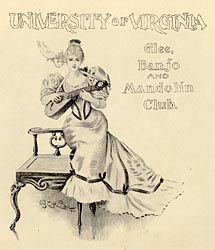 |
|
| British-Lute-Harp or Dital Harp, invented by Edward Light about 1810. This is exactly the market Light intended for these instruments. | This young lady holds the later 1827 Levien instrument. | ||
|
If you enjoyed this page, or found it useful for research, please consider supporting Harpguitars.net so that this information will be available for others like you and to future generations. Thanks!
|
|
If you enjoyed this article, or found it
useful for research, please consider making a donation to The
Harp Guitar Foundation, |
|
|
|
All Site Contents Copyright © Gregg Miner,2004-2020. All Rights Reserved. Copyright and Fair Use of material and use of images: See Copyright and Fair Use policy. |